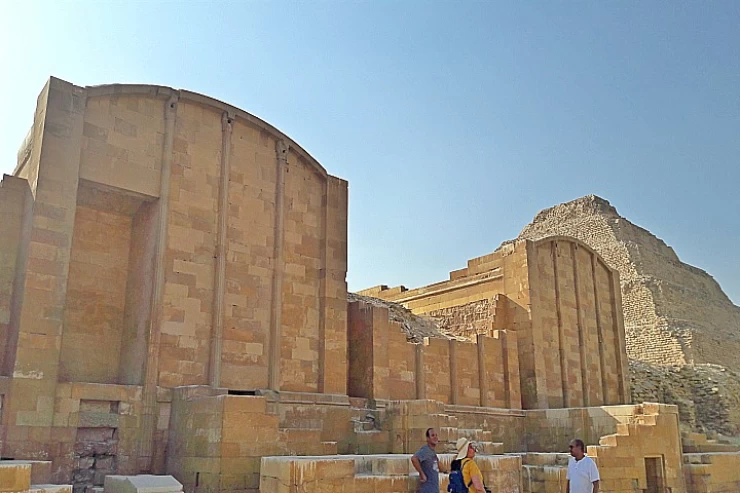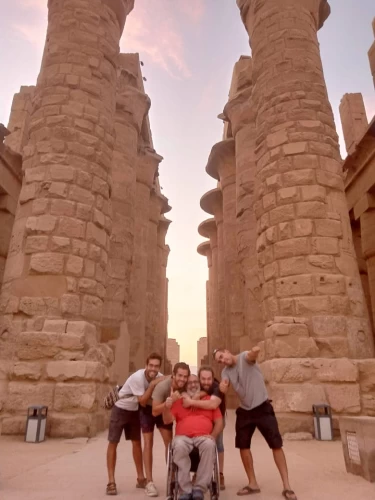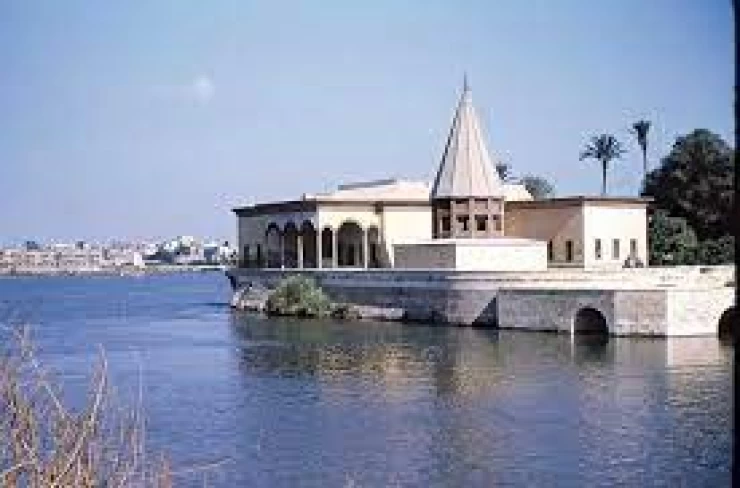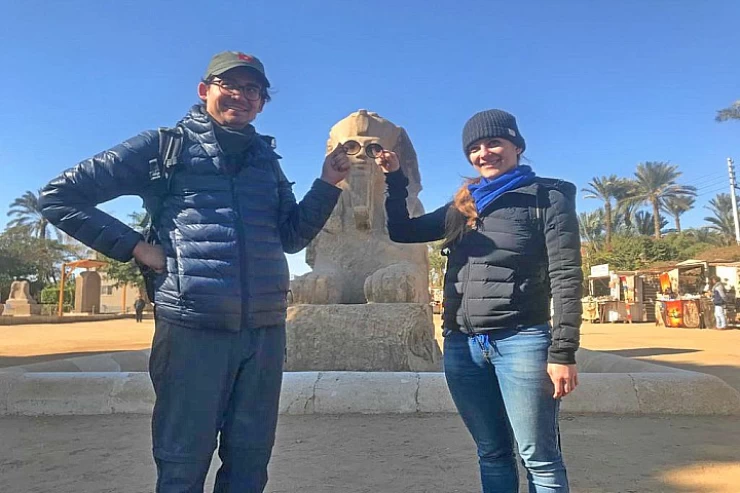
Histoire de l'Egypte | Chronologie de l'histoire de l'Égypte
Histoire et Chronologie de l'Égypte
L'occupation humaine en Égypte remonte à au moins 6000 avant J.-C., lorsque la vallée du Nil a été habitée pour la première fois. L'union politique de la Haute et de la Basse-Égypte, vers 3150 avant J.-C., sous le premier pharaon de la Première dynastie, Narmer, a réuni la civilisation égyptienne antique. Dans l'ensemble, la domination égyptienne a duré jusqu'à la conquête de l'Empire achéménide au sixième siècle avant J.-C. En raison de la crue du Nil, de ses rives et deltas fertiles, ainsi que des réalisations et de l'impact des peuples indigènes d'Égypte, l'histoire de l'Égypte regorge de grands événements et de grandes manifestations archéologiques. La plupart de l'histoire ancienne de l'Égypte est restée un mystère jusqu'à la découverte de la pierre de Rosette qui a permis de décoder les secrets des anciens hiéroglyphes égyptiens. La grande pyramide de Gizeh est l'une des sept merveilles du monde antique et la bibliothèque d'Alexandrie a été la seule de son genre pendant des siècles.
L'Égypte a une grande histoire qui en fait l'une des plus grandes civilisations du monde antique, l'histoire de l'Égypte s'est divisée en histoire ancienne, l'histoire copte y compris l'époque romaine et l'histoire islamique à l'ottoman et la nouvelle histoire égyptienne. Commençant par Mohmed Ali, elle avait connu que chaque pays a connu des hauts et des bas Egypte en a beaucoup. La fondation humaine en Egypte remonte à au moins 6000 avant J.-C. période pendant laquelle la vallée du Nil a été habitée pour la première fois. La civilisation égyptienne antique s'est unie vers 3150 avant J.-C. avec l'unification politique de la Haute et la Basse Egypte, sous le premier pharaon de la première dynastie, Narmer. La domination égyptienne d'origine a continué pour la plupart jusqu'à la conquête de l'empire achéménide au sixième siècle avant J.-C.
Préhistoire (avant 3100 avant J.-C)
Il existe des données de pétroglyphes le long des terrasses du Nil et dans les Oasis du désert. Au 10eme siècle av. J.-C., une culture de chasseurs-cueilleurs et de pêcheurs a été renouvelée par une culture de la mouture des céréales. Les changements climatiques et / ou le surpâturage à proximité de 6000 ans avant J.-C. ont commencé à dessécher les terres pastorales de l'Égypte, formant le Sahara. Les premiers peuples tribaux ont migré vers le Nil, où ils ont formé une économie agricole sédentaire et une communauté plus centralisée.
Vers 6000 avant J.-C., une culture néolithique enracinée dans la vallée du Nil. Pendant l'ère néolithique, plusieurs cultures prédynastiques se sont développées indépendamment en Haute et Basse Égypte. La culture Badari et la série successeur Naqada sont généralement considérées comme des précurseurs de l'Égypte dynastique. Le premier site connu de la Basse-Égypte, Merimda, est antérieur au Badarian d'environ sept cents ans. Les communautés contemporaines de la Basse-Égypte ont coexisté avec leurs homologues du Sud pendant plus de deux mille ans, restant culturellement distinctes, mais entretenant des contacts fréquents par le biais du commerce. Les premières preuves connues d'inscriptions hiéroglyphiques égyptiennes sont apparues pendant la période prédynastique sur des récipients en poterie Naqada III, datés d'environ 3200 ans av. J.-C.
Egypte ancienne (3100-332 avant J.-C.)
Un royaume unifié a été fondé en 3150 avant J.-C. par le roi Ménès, conduisant à une série de dynasties qui ont régné sur l'Égypte pendant les trois millénaires suivants. La culture égyptienne s'est épanouie pendant cette longue période et est restée typiquement égyptienne dans sa religion, ses arts, sa langue et ses coutumes. Les deux premières dynasties dirigeantes d'une Égypte unifiée ont préparé le terrain pour la période de l'Ancien Empire (vers 2700-2200 avant J.-C). Qui a construit de nombreuses pyramides, notamment la pyramide de la troisième dynastie de Djoser et les pyramides de Gizeh de la quatrième dynastie.
La première période intermédiaire a commencé à une époque de troubles politiques il y a près de 150 ans. La stabilité du gouvernement rétablit la prospérité du pays dans l'Empire du Milieu en 2040 av. J.-C. et atteignit son apogée sous le règne du pharaon Amenemhat III. Et avec l'entrée dans la seconde période de séparation, avec l'arrivée de la première dynastie étrangère en Egypte, le royaume sémitique d'Hexus. Les envahisseurs Hyksos ont occupé la majeure partie de la Basse-Égypte vers 1650 avant J.-C. et ont créé une nouvelle capitale à Alvarez. Ils ont été expulsés par la force de la Haute Egypte dirigée par Ahmose I, qui a fondé la dix-huitième dynastie et a déplacé la capitale de Memphis à Thèbes.
L'histoire de l'Égypte ancienne s'étend des premiers peuplements préhistoriques du Nord de la vallée du Nil à la conquête romaine en 30 av. L'histoire de l'ère pharaonique remonte à environ 3200 av. J.-C., lorsque la Haute et la Basse-Égypte sont devenues un État cohérent jusqu'à ce que le pays tombe sous la domination grecque en 332 av.
Des circuits en Egypte remarquables et sûrs ! Avec nos circuits de Pâques en Égypte 2023, vous ressentirez la grâce de l'esprit antique des Égyptiens en explorant les majestueuses pyramides, les temples, les tombeaux qui hantent votre esprit et votre âme tout en bénéficiant du meilleur service. Des meilleures croisières sur le Nil aux forfaits classiques de visites de sites historiques, Cairo Top Tours propose une gamme d'activités et de vacances d'aventure en Égypte. Outre les sites historiques traditionnels, nous proposons une sélection distinctive de safaris dans le désert égyptien à travers le silence magique et l'attrait des Oasis de Siwa, dans le désert égyptien. Choisissez parmi les meilleures offres d'excursions d'une journée en Égypte et choisissez l'une de nos superbes excursions d'une journée au Caire. Nos passionnantes excursions à Louxor et excursions à Assouan vous feront découvrir tous les chefs-d'œuvre historiques de la ville, notamment la fascinante Vallée des Rois, le fantastique temple de la reine Hatchepsout et les temples uniques d'Abu Simble, le tout accompagné d'un guide expert qui vous expliquera l'histoire de ces incroyables sites.
Un expert de Cairo Top Tours, spécialiste en égyptologie et parlant votre langue, vous assistera partout où besoin sera.
The ancient history that can be perceived from the Pharaohs has to be one of the greatest historical civilizations ever. Its events’ timeline is well over five thousand years, and many aspects of the world, such as art, architecture, culture, and even religion, have their bases in Egypt. The records of the land of Egypt are interesting in that they contain histories of empires that were built and then perished, histories of great kings and queens, and outstanding places and structures that even today, in modern societies, can only marvel at. Egypt’s history is undoubtedly dominated by a vibrant narrative of struggle, hope, and ingenuity of the people portrayed, from the making of the pyramids to the currents of the Nile.
The Ancient Kingdoms of Egypt (c. 3100 BC–332 BC)
1. Pre-Dynastic Period (Before 3100 BC)
The elements of history written of Egypt are dated around 3100 BC, but if one avails of its importance in terms of history, it dates back even to the pre-dynastic era, when there was the emergence of small agricultural settlements along the Nile. By this time, the early residents of Egypt were busy establishing forms of agriculture as well as animal husbandry, pottery making, and the making of crude tools. These settlements served as the foundation of the elaborate systems of culture and society that were to come.
2. The Unification and Early Dynastic Period (c. 3100–2686 BC)
King Narmer, often referred to as Menes was responsible for the unification of Upper and Lower Egypt, which signified the onset of ancient Egyptian civilization. He is considered to be the first pharaoh of Egypt and founded the nation’s first dynasty. This unifying act was essential since it created the nucleus around which the centralized monarchy of Egypt, which was the prevailing system of government for almost three thousand years, would revolve.
Towards the tail end of the Early Dynastic, the very first steps in the construction of monumental architecture began, and hieroglyphs were mastered. It was in this period that the rulers were expected to fulfill the role of the king and also that of a god. This idea existed for many years and was a fundamental one in Egypt.
3. The Old Kingdom (c. 2686–2181 BC)
The divine rulers, who were the Pharaohs in the earthly realm, tamed every resource and manpower to erect huge structures such as the Great Pyramid of Khufu and the Sphinx.
The Old Kingdom period displayed a clear and consistent administrative hierarchy and even a large-scale institutional support system that controlled the resources, agricultural production, and the temples of the state. However, in the latter years of this era, the dominant position of the central authority began to diminish, ushering in an era of chaos and fragmentation.
4. The Middle Kingdom (c. 2055–1650 BC)
Following the tumultuous First Intermediate Period referred to, Egypt returned to political stability and strong rulers in its Middle Kingdom. There is a revival in this period in the fields of art, literature, and monumental building works. Pharaohs such as Mentuhotep 11 and Senusret 111 were responsible for extending Egypt’s boundaries southward into Nubia as well as promoting relations with other countries through trade.
The Middle Kingdom is usually regarded as the classical period of ancient Egypt, filled with relative calm and wealth. The authorities emphasized the development of construction and the growth of the economy of Egypt. In spite of such achievements, the internal conflicts and external challenges finally caused the disintegration of the Middle Kingdom, making way for another period of darkness and despair.
5. The New Kingdom (c. 1550–1070 BC)
The new kingdom constitutes, also from a chronological point of view, the culminating era of ancient Egyptian civilization. It was during this period that Egypt was transformed into a full-fledged empire under rulers such as Thutmose III, Hatusu, and Rameses II, who through wars and conquests, or rather political strategies, expanded Egypt's borders. He also added great temples during this period, such as those at Karnak, Luxor, and Abu Simbel, many of which still exist today.
Il nuovo regno era un’epoca che riformò anche la religione in notevoli modi, come il periodo di regno del faraone Akhenaten, which introduced a period of continuous fight in worshipping a single god—Aten, the disk of the sun. His was, however, an unpopular and a very brief rule, for there were leaders after him who brought back the old ways of worship in Egypt, which was worshiping none but many gods.
But then, power aside, Egypt was not immune to the laws of history. By the close of the New Kingdom, this state institution in question was already wobbly, and there was a gradual abatement of its activities.
1. The Ptolemaic Dynasty (332–30 BC)
For many centuries, the old state of Egypt thrived free until that point in time, which altered when the rule of Alexander the Great started in the year 332 BC. It was also during those years that Alexandria became the center of Greek civilization and education, with the noted Library of Alexandria and the Lighthouse, which is now one of the Seven Wonders of the Ancient World.
Until the end of the dynasty, the traditions of Egypt were largely maintained, even though the rulers were Hellenistic kings. The last ruler of this dynasty, Cleopatra VII, was known to have opposed the domination of Rome by trying to establish relations with Julius Caesar and Mark Antony. However, after her loss at the Battle of Actium in 31 BC, Egypt fell into the Roman Empire.
Under the control of the Romans, Egypt was considered one of the most valuable provinces of the empire, primarily because it was rich and produced plenty of crops, particularly grains. The Romans maintained several of the practices of the Ptolemaic kings; however, Egypt was administered as a colony of the empire. The establishment of Christianity in Egypt started during the Roman times, and it was in the 4th century A.D. that Egypt began to develop into a significant early center of Christianity.
The phase change from the Roman to the Byzantine Empire that occurred in 395 AD marked the slow deterioration of Egypt’s economic well-being, but Egypt was still geographically and religiously active. It was also in this time period that the popular Coptic Church was born, which incorporated aspects of Christianity with ancient Egyptian beliefs.
The Egyptian territories fell to the Army of Islam in the year 642 AD. This marked the commencement of the Islamic Era in Egypt. As Cairo, a city created by the Fatimids in 969 AD, grew prominent, it was clear that Egypt was going to become one of the most pivotal countries in the Islamic world. After most of the Egyptian lands were conquered, Egypt witnessed great prosperity in learning, trade, and the arts.
The Fatimids, Ayyubids, and Mamluks
The capital of Egypt was established, and the famous Al-Azhar University was built during the reign of the Fatimid Dynasty which ruled over Egypt. With the waning of the Fatimid era, Egypt was captured for a brief period by the fact that Saladin, protector of the territories, including Egypt himself, later founded the Ayyubid dynasty, whose main task was fighting against the Crusaders.
Later came the Mamluks, who were a military caste and who ruled over Egypt for several eras. They built a number of the most beautiful structures in the city, including mosques, schools, and fortifications, in the Mamluk period. Egypt was, at least at the stage when it was defeated, a rather big country with advanced development before it was conquered by the Ottoman Empire.
Egypt in the Modern Era (1517–Present)
1. Ottoman and British Rule
With the Ottoman Empire's conquest in 1517, Egypt was annexed as part of the empire for nearly four hundred years and had remained so bound. That is primarily due to its geopolitical possibilities; it was invaded several times by European powers, and in 1798 Napoleon Bonaparte managed to invade Egypt for a short period. After the French lost in this region, Egypt was ruled by Muhammad Ali Pasha, who was on modern Egypt’s compass. He reformed agriculture, industry, and the military; these transformations served as the waking up of the modern state of Egypt.
In the late nineteenth century, Egypt acquired the status of a British protectorate, which lasted until ’52, the year Egypt resumed control after a revolution led by Gamal Abdel Nasser. It was Nasser who became one of the most powerful figures within the Arab sphere of influence, propagating pan-Arabism and earlier nationalizing the Suez Canal in 1956.


















